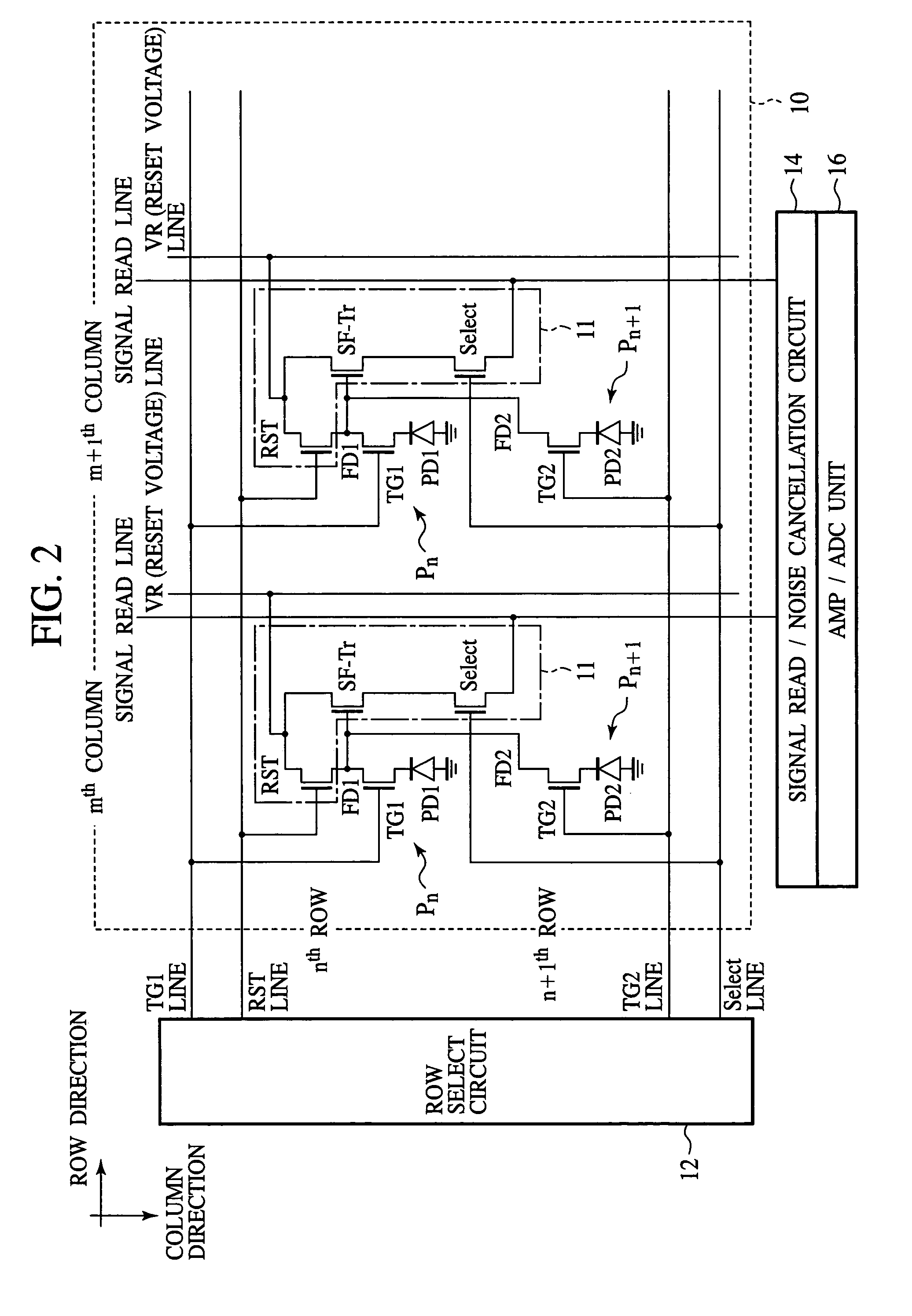Solid-state image sensor and method for fabricating the same
a solid-state image sensor and image sensor technology, applied in the field of solid-state image sensors, can solve problems such as operation defects, and achieve the effects of improving intra-plane uniformity, less fabrication fluctuations, and the same saturated charge amoun
- Summary
- Abstract
- Description
- Claims
- Application Information
AI Technical Summary
Benefits of technology
Problems solved by technology
Method used
Image
Examples
first embodiment
[0039][A First Embodiment]
[0040]The solid-state image sensor and the method for fabricating the same according to a first embodiment of the present invention will be explained with reference to FIGS. 1 to 20.
[0041]FIG. 1 is a plan view of a chip image of the solid-state image sensor according to the present embodiment. FIG. 2 is a circuit diagram of the pixel array unit of the solid-state image sensor according to the present embodiment. FIGS. 3–6 are plan views of the solid-state image sensor according to the present embodiment, which show the structure thereof. FIGS. 7A–7B are diagrammatic sectional views of the solid-state image sensor according to the present embodiment, which show the structure thereof. FIG. 8 is a graph of depth-wise changes of the potential of the region for a photodiode formed in of the solid-state image sensor according to the present embodiment. FIGS. 9A and 9B are views of the extension of the depletion layer of the photodiode. FIGS. 10A–17D are sectional...
second embodiment
[0104]In the color pixel array unit 10a, the buried p-type layer 48 is not formed either in the region for the transfer transistor TG formed in, because the end of the photoresist film used in forming the buried p-type layer 48 located near the transfer transistor TG may affect the impurity profile of the channel portion of the transfer transistor TG (see second embodiment).
[0105]FIG. 8 is a graph of depth-wise changes of the potential in the region for the photodiode PD formed in. In FIG. 8, the solid line indicates those of the color pixel, and the dotted line indicates those of the black pixel.
[0106]As shown, in the black pixel, because of the buried p-type layer 48 buried below the buried n-type layer 26PD, the potential depth is smaller by about 0.3–0.4 V in comparison with that of the color pixel. Accordingly, the charge amount (saturated charge amount) stored in the photodiode PD corresponds to ˜9000 in color pixels and ˜5000 in black pixels under the well conditions of the p...
third embodiment
[0179][A Third Embodiment]
[0180]The solid-state image sensor and the method for fabricating the same according to a third embodiment of the present invention will be explained with reference to FIGS. 24A to 25. The same members of the present embodiment as those of the solid-state image sensor and the method for fabricating the same according to the first and the second embodiments shown in FIGS. 1 to 23B are represented by the same reference numbers not to repeat or to simplify their explanation.
[0181]FIGS. 24A and 24B are diagrammatic sectional views of the solid-state image sensor according to the present embodiment, which show a structure thereof. FIG. 25 is a graph of depth-wise changes of the potential in the region for a photodiode to be formed in of the solid-state image sensor according to the present embodiment.
[0182]In the solid-state image sensor according to the first and the second embodiments, the buried n-type layer 26PD is formed under the same conditions for the ph...
PUM
 Login to View More
Login to View More Abstract
Description
Claims
Application Information
 Login to View More
Login to View More - R&D
- Intellectual Property
- Life Sciences
- Materials
- Tech Scout
- Unparalleled Data Quality
- Higher Quality Content
- 60% Fewer Hallucinations
Browse by: Latest US Patents, China's latest patents, Technical Efficacy Thesaurus, Application Domain, Technology Topic, Popular Technical Reports.
© 2025 PatSnap. All rights reserved.Legal|Privacy policy|Modern Slavery Act Transparency Statement|Sitemap|About US| Contact US: help@patsnap.com



